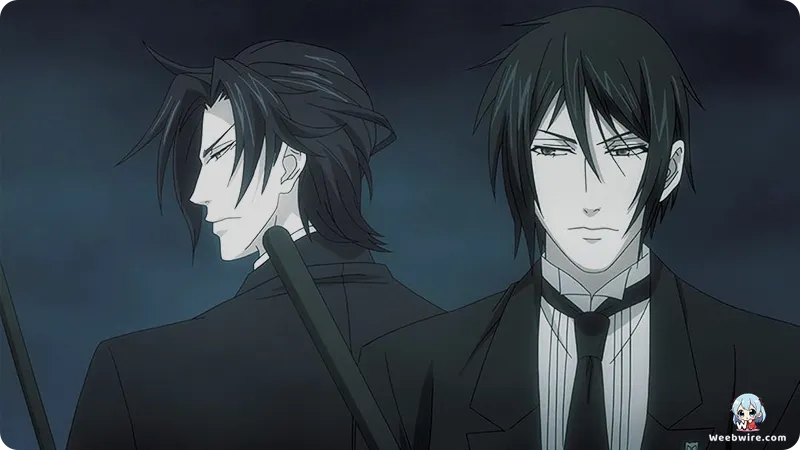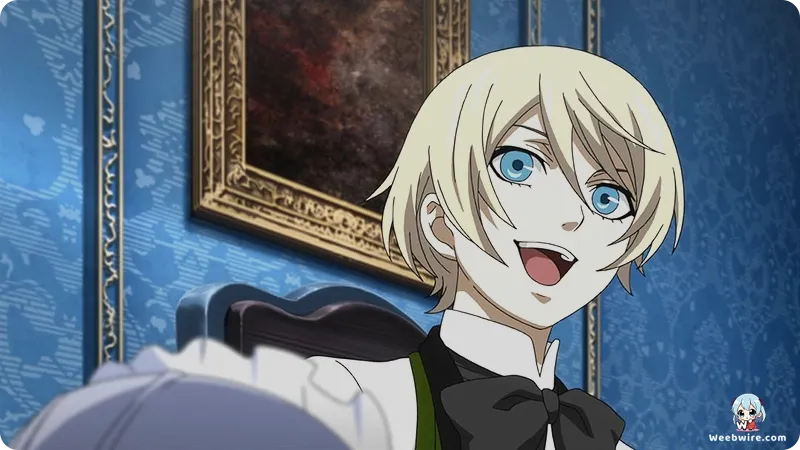Black Butler II: An Anime-Original Legacy That Divided and Defined a Dark Saga

The iconic world of Black Butler, celebrated for its darkly elegant demon butler Sebastian Michaelis and his young master Ciel Phantomhive, took an unexpected and groundbreaking turn with the release of its 2010 sequel, Black Butler II. While the inaugural season faithfully adapted pivotal arcs from Yana Toboso's acclaimed manga, this subsequent installment forged an entirely anime-original path, igniting a fervent discourse within the fandom and etching a distinctive legacy into the franchise's history. This bold narrative venture, diverging completely from its source material, introduced fresh faces and a storyline that continues to be a subject of intense fascination and debate among enthusiasts.
An Anime Original Narrative
At the heart of Black Butler II's unique identity lies its complete independence from the manga's ongoing plot. Following a first season that cleverly interwove manga content with an original anime conclusion, the production studio, Aniplex, made the decision to craft a wholly new saga. This fresh narrative introduced a compelling new duo: the mercurial and often cruelly capricious Alois Trancy, and his chillingly composed, manipulative demon butler, Claude Faustus. This significant departure from Toboso's established universe was met with a spectrum of reactions; some viewers lauded the creative liberty and the opportunity to explore new character dynamics and moral ambiguities, while others found the stark divergence from the beloved manga's foundation unsettling. Unburdened by existing chapters, Aniplex explored profound themes of desire, psychological manipulation, and the intricate nature of demonic pacts from an entirely novel perspective.
Introducing Alois Trancy and Claude Faustus
The introduction of Alois Trancy and Claude Faustus was central to the season. Their complex relationship formed the core of the narrative. Alois, haunted by a traumatic past and consumed by a desperate yearning for affection and recognition, presented a stark psychological contrast to Ciel Phantomhive’s more pragmatic, revenge-driven persona. His unpredictable temperament and occasional sadistic tendencies rendered him a deeply complex figure, oscillating between a compelling antagonist and a tragic victim.

Claude, designed as Sebastian's formidable rival, embodied a different, more calculating facet of demonic servitude. His chilling obsession with Ciel’s "delicious" soul and his cold, methodical demeanor sharply differentiated him from Sebastian’s more theatrical, yet equally sinister, approach. The subtle yet powerful visual symbolism, such as Claude’s recurring spider motif starkly contrasting Sebastian’s raven, underscored their distinct identities and the intricate web of deception they spun.
Ciel's Resurrection and the Battle for His Soul
One of the season’s most surprising narrative developments involved the initial premise of Ciel Phantomhive's demise, only for him to be miraculously resurrected and once again bound to Sebastian. This return, however, was clouded by a mysterious amnesia concerning the dramatic events of the first season’s finale. This plot twist seamlessly reintegrated the original protagonists into the new, anime-original storyline, setting the stage for confrontations between the two demon-human pairs.
The season orchestrated a convoluted battle for Ciel’s soul, with Claude Faustus relentlessly pursuing its claim, while Sebastian fiercely contended to reclaim what he considered his rightful prize. This elaborate ballet of manipulation, betrayal, and dark contracts held audiences captive, prompting constant speculation about each character's ultimate motives.
A Controversial Conclusion
The conclusion of Black Butler II remains one of the most debated and controversial endings in anime history. Without revealing specific spoilers, the ultimate resolution for Ciel Phantomhive represented an unprecedented and radical departure from any narrative trajectory hinted at within the manga at that time. This anime-exclusive finale irrevocably altered Ciel's destiny, firmly establishing the second season as a self-contained narrative with profound and lasting consequences for its characters within its own distinct continuity.
Aniplex's decision to conclude the series with such a definitive and irreversible outcome for the anime-only timeline ignited passionate discussions among fans, with some applauding its audacious originality, while others felt it deviated too far from the foundational essence of the original story. It demonstrated the creative risks the studio was prepared to embrace to deliver a memorable, albeit divisive, conclusion.
Production Quality and Voice Acting
Beyond its intricate plot, Black Butler II maintained the franchise’s high standards for production, notably in its exceptional voice acting. Daisuke Ono and Maaya Sakamoto once again delivered stellar performances as Sebastian Michaelis and Ciel Phantomhive, respectively, imbuing their iconic characters with remarkable depth. The cast was further enriched by Takahiro Sakurai’s compelling portrayal of Claude Faustus and Nana Mizuki’s critically acclaimed performance as Alois Trancy, with Mizuki particularly praised for capturing Alois's volatile yet fragile essence with extraordinary skill. The accompanying musical score continued to perfectly complement the gothic atmosphere, with the opening and ending themes expertly encapsulating the series' dark, mysterious, and often melancholic tone.
Black Butler II stands as a powerful testament to the creative liberties sometimes granted to anime adaptations. While its narrative diverges significantly from the manga's established canon, its distinctive storyline, compelling new characters, and notoriously controversial ending have cemented its place as a pivotal, albeit unique, chapter in the Black Butler saga. It is a season that embraced differentiation, challenging fan expectations and sparking enduring discussions about destiny, pacts, and the intricate interplay between humanity and demonkind. For viewers seeking a darker, more complex exploration of the Black Butler universe beyond the manga’s direct trajectory, Black Butler II offers an undeniably fascinating, if contentious, journey.
Credits
Black Butler II
Author
Yana Toboso
Cover Art
Minako Shiba
Studio
Aniplex
Publisher
Square Enix
Producers





